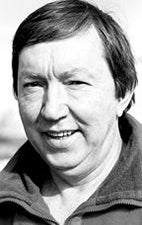Signs spring is in the air
Published 5:45 am Saturday, March 3, 2018
Now that winter is rearing its icy head, I am not one of those people who wax nostalgic about fireplaces and heating their homes with open fireplaces or wood/coal burning stoves or furnaces.
The first signs of spring on Blair Branch back in the 1950s and 60s had little, if anything, to do with bluebirds and buds but more to do with the smell of “brash” fire smoke on the early evening breeze.
In those days folks on our little holler were usually burning off the residue of last year’s garden the last week of February or the first week of March. Others, like my mom, raked up as much garden trash, especially corn stalks, as we could easily pack and heaped it into a pile or piles at whatever spot she intended to have one or more lettuce beds.
Then we scoured the beech woods closest to our home for wind-felled dead branches to heap on the piles.
Arm loads of dried broom sage straw were often added to the bottom of the piles for tinder because it would practically explode with flames as soon as a lighted matched was touched to it. I’ve heard farmers complain that broom sage (sedge) was a sign of poor soil. If there’s any truth to that, the hillside fields and pastures on the Blair Branch of my youth contained some of the most impoverished soil on the face of earth. The stuff was everywhere. It grew in clumps about 30 inches tall and was considered a nuisance with no forage value. My Uncle Stevie Craft used to say broom sage would constipate a Billy goat.
Anyway, once the “brash piles” (“brash” being a generic term we used in reference to any all-inclusive pile of flammable organic material) were considered large enough and contained enough hardwood that the ashes might settle into a heap of red-hot cinders that would burn for an hour or so, they were set afire. The resulting plume of white smoke scented the breeze for a mile or more, depending on which way the wind was blowing. If my dad said, “spring is in the air” it usually meant that he was smelling the smoke off somebody’s lettuce bed fire on down the holler below our place.
It was widely believed that the bed of embers would scorch and destroy any weed and grass seeds that might have been in the soil below it. We also thought the ashes, when tilled up with said soil, provided fertilizer that lettuce needed to properly thrive and prosper. Of course mom sowed her lettuce seeds so thickly that any weed that dared to sprout would have been smothered before it had a chance to see the light of day.
I have not, personally, burned off my lettuce beds in decades, nor have I failed to produce more lettuce than several families can consume. But, in my younger days, burning off the lettuce bed was such an important ritual to the ushering in of spring that I may do it this year just for old times’ sake.
I normally run the lawn mower over my garden with a mulching blade that turns anything, still standing, into tiny shreds. Then I till all of last years’ dead plants back into the soil where it eventually composts and enriches the soil. At least that’s the theory and I’m reasonably sure it works.
This year I’ve noticed that our fruit trees and several other trees around the place have numerous dead branches that need pruning. Loretta’s pampas grass, which we usually burn where it’s standing, will be chopped off to serve as the broom sage tinder of old and I will spare a couple or three arm loads of corn stalks from the mulching blade to fuel the lettuce bed fire.
My brother, Andy, is planning to visit this week and I plan to enlist his assistance in accumulating all these items into a burn pile.
So, if you are outdoors late in the afternoon, just before dark, on Thursday and you smell “brash smoke” on the evening breeze that seems to be coming from Paint Lick, do not be worried that the woods are on fire.
It will simply mean that Andy and I are trying to hurry spring along by burning off our lettuce bed.
Reach longtime Enterprise columnist Ike Adams at ikeadams@aol.com or on Facebook or 249 Charlie Brown Road, Paint Lick, KY 40461.





